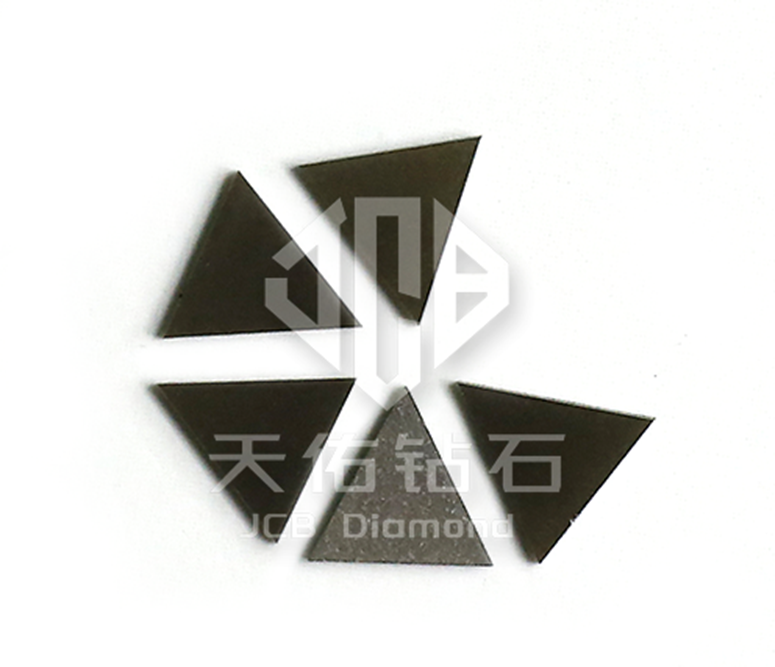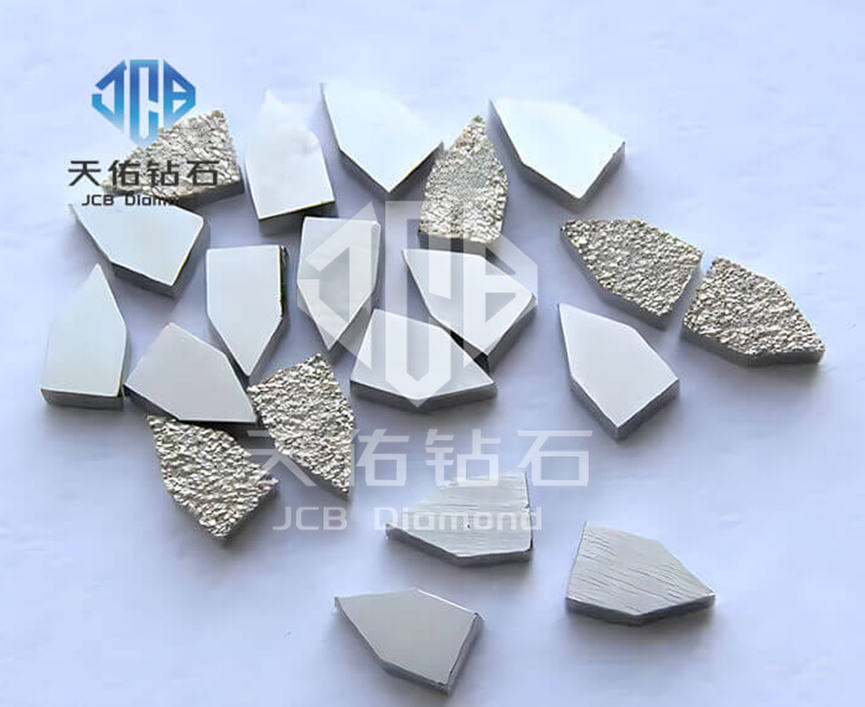Abstract: This report conducts an in-depth study on CVD polycrystalline diamond tool blanks, systematically analyzes its preparation process, performance characteristics, application scenarios and challenges, and provides theoretical and practical support for promoting the widespread application of this material in the tool field.
1. Introduction
In the modern mechanical processing industry, extremely high requirements are placed on the cutting performance, precision retention and durability of tools. CVD polycrystalline diamond tool blanks have gradually become a key material for high-performance tool manufacturing due to their excellent hardness, wear resistance and chemical stability, showing great potential in the field of precision machining.
2. Preparation process of CVD polycrystalline diamond tool blanks
(I) Basic principles of chemical vapor deposition
CVD technology is mainly based on gaseous carbon sources (such as methane, etc.) and hydrogen in a high temperature (usually 800-1200℃) and low pressure (1-100kPa) environment, through thermal decomposition or plasma excitation, so that the carbon atoms decomposed from the carbon source are deposited on the substrate surface and crystallized to form a diamond structure. In this process, atomic hydrogen plays a key role in etching non-diamond phase carbon and promoting diamond growth.
(II) Influence of key process parameters
Temperature: Temperature has a significant effect on the nucleation and growth rate of diamond. At lower temperatures, the nucleation rate is low but the grain growth is slow, and the crystal quality is high; too high temperature will lead to an increase in the nucleation rate, too fast grain growth, and easy crystal defects.
Pressure: Appropriate pressure helps to maintain the equilibrium concentration of the reaction gas. Too low pressure is not conducive to the effective collision of gas molecules. Too high pressure may inhibit the growth of diamond and even lead to graphitization.
Gas flow ratio: The flow ratio of carbon source gas to hydrogen determines the concentration of carbon atoms in the deposition environment. When the carbon source ratio is too high, non-diamond phase carbon is easily generated; too low a ratio will reduce the growth rate.
(III) Preparation process optimization strategy
Substrate pretreatment: Scratching and ultrasonic treatment of the substrate can increase the surface roughness, increase the nucleation density, and provide more active sites for diamond growth.
Plasma enhancement technology: The introduction of plasma can effectively reduce the reaction temperature, increase the reaction activity, promote the rapid growth of diamond, and improve the crystal quality.
III. Performance characteristics of CVD polycrystalline diamond tool blanks
(I) Ultra-high hardness and wear resistance
CVD polycrystalline diamond tool blanks have a hardness close to that of natural diamond, with a Vickers hardness of 80-100GPa. During the cutting process, its excellent wear resistance enables the tool to maintain a sharp edge for a long time, significantly extending the tool life, reducing the number of tool changes, and improving processing efficiency. For example, when processing high-silicon aluminum alloys, the wear rate of CVD polycrystalline diamond tools is reduced several times compared to carbide tools.
(II) Good thermal stability
In high temperature environments (up to 700-800℃), CVD polycrystalline diamond tool blanks can still maintain the stability of their structure and performance. This feature enables it to perform well in high-temperature processing scenarios such as high-speed cutting and dry cutting, and can effectively avoid tool softening and increased wear caused by increased temperature.
(III) Chemical stability
It has extremely high corrosion resistance to common acids, alkalis and other chemical substances. When processing materials containing corrosive media, it can ensure the chemical properties of the tool are stable, and the cutting performance and life of the tool will not be affected by chemical reactions.
(IV) Correlation between microstructure and performance
The microstructure of polycrystalline diamond is composed of many tiny diamond grains randomly oriented and arranged, and the grain boundary plays an important role in it. Smaller grain size and uniform grain boundary distribution can effectively hinder the expansion of cracks and improve the toughness and comprehensive performance of the material. At the same time, the mutual embedding between grains also enhances the overall strength and wear resistance of the material.

IV. Application scenario analysis
(I) Aerospace field
It is used to process difficult-to-process materials such as titanium alloys and nickel-based alloys, such as precision processing of aircraft engine blades, landing gear and other parts. CVD polycrystalline diamond tools can achieve high-precision dimensional control and good surface quality, meeting the stringent requirements of aerospace products for processing accuracy and reliability.
(II) Automobile manufacturing field
It is widely used in the processing of aluminum alloy parts such as engine cylinder blocks and cylinder heads. Its high cutting efficiency and long tool life help reduce production costs and improve production efficiency. At the same time, it can ensure the flatness and finish of the processed surface and improve the performance and reliability of the engine.
(III) Electronic manufacturing field
It is suitable for cutting, slicing and other processing processes of semiconductor materials such as silicon wafers and ceramic substrates. Due to its extremely high hardness and wear resistance, it can achieve high-precision processing, meeting the development trend of the continuous reduction in the size of electronic components and the continuous improvement in precision requirements.
V. Challenges and solutions
(I) Bonding strength with the substrate
The bonding strength between CVD polycrystalline diamond and the tool substrate is insufficient, and the coating is prone to fall off during the cutting process. Solutions include optimizing the selection of substrate materials and surface treatment processes, as well as using transition layer technology to enhance the bonding between the two.
(II) High cost
The price of CVD polycrystalline diamond tool blanks is relatively high due to factors such as complex preparation processes, expensive equipment and high raw material costs. In the future, costs can be reduced by improving preparation processes, improving production efficiency, reducing energy consumption, and developing new raw materials.
VI. Conclusion and Prospect
(I) Research Conclusion
CVD polycrystalline diamond tool blanks have shown broad application prospects in multiple high-end manufacturing fields with their unique performance advantages. Through the optimization of the preparation process and in-depth research on the performance, its product quality and application effect can be continuously improved.
(II) Future Prospect
In the future, it is necessary to further strengthen basic research, deeply explore the growth mechanism of CVD polycrystalline diamond, optimize the preparation process, improve the bonding strength with the substrate, and reduce costs. At the same time, expand its application in the field of emerging material processing and promote the development of manufacturing industry towards high precision, high efficiency and green direction.
